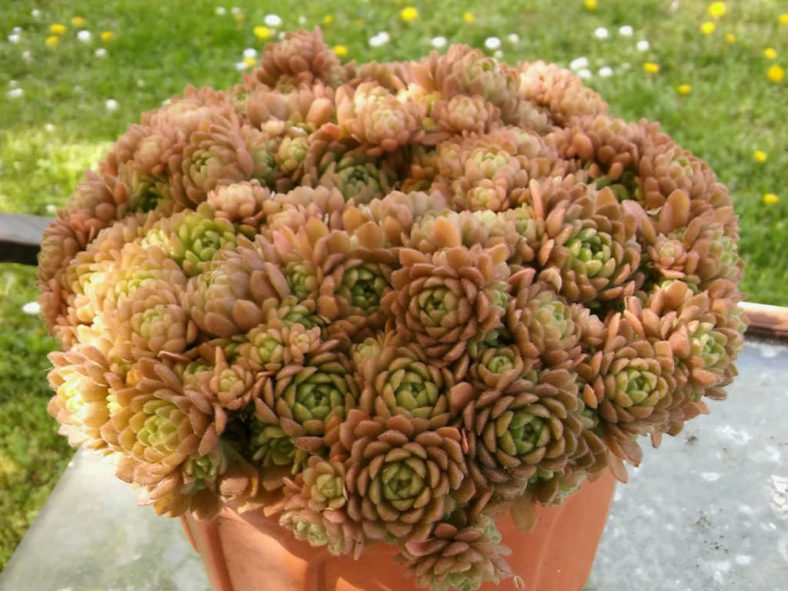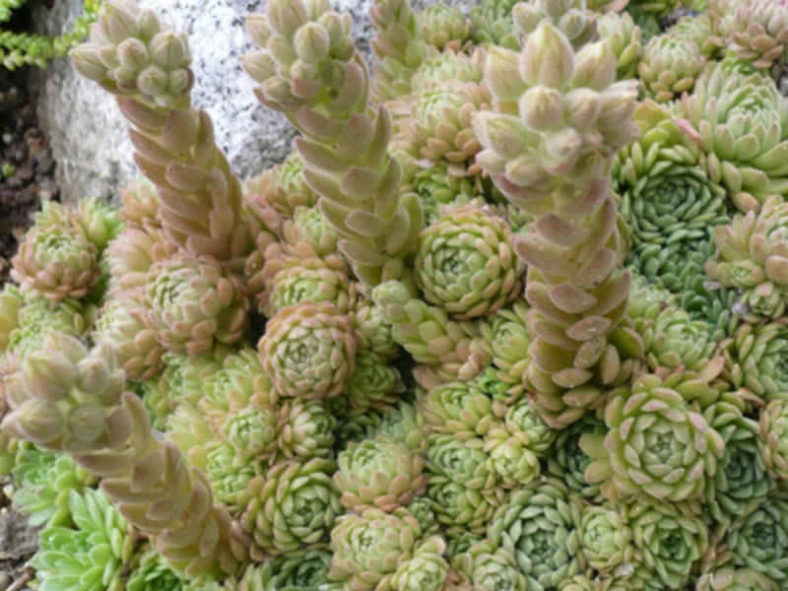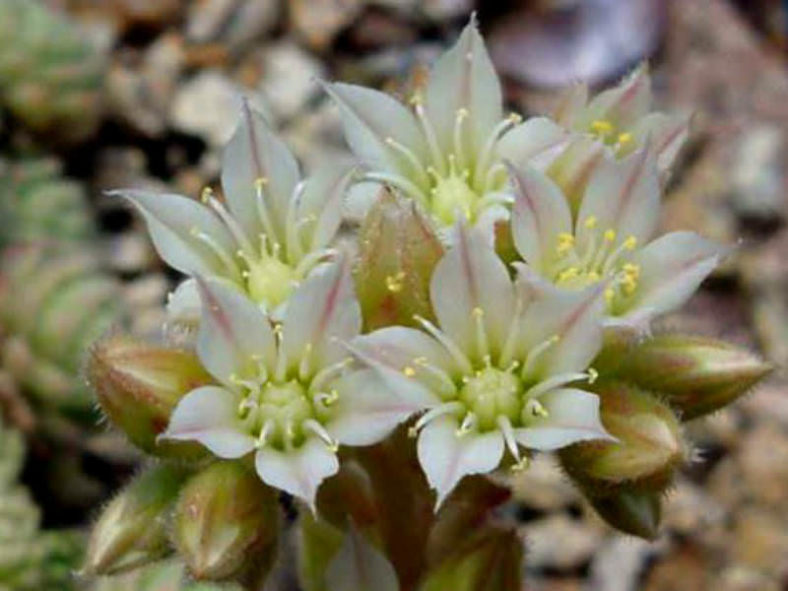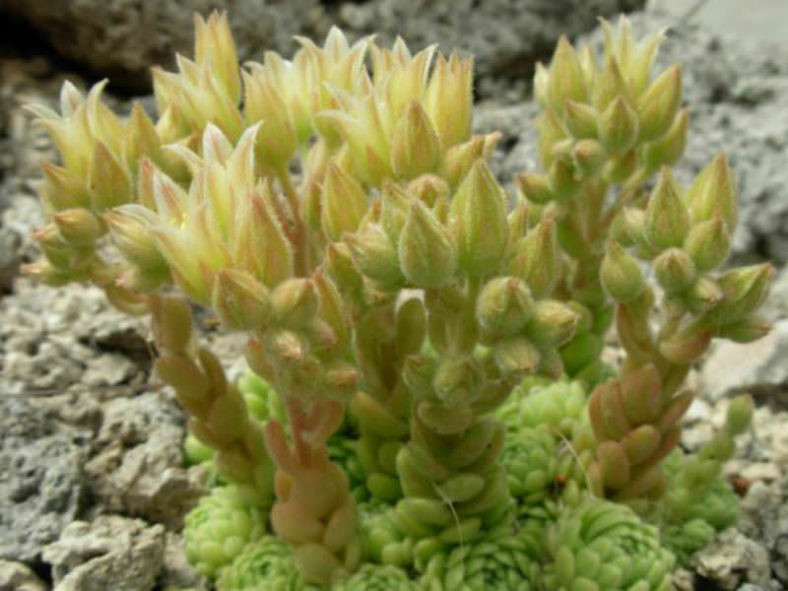Scientific Name
Prometheum aizoon (Fenzl) 't Hart
Synonym(s)
Chaloupkaea aizoon, Cotyledon aizoon, Rosularia aizoon, Rosularia pallida, Rosularia tauricola, Sedum chrysanthum subsp. aizoon, Sedum chrysanthum var. aizoon, Umbilicus aizoon, Umbilicus pallidus
Scientific Classification
Family: Crassulaceae
Subfamily: Sempervivoideae
Tribe: Sedeae
Genus: Prometheum
Etymology
The specific epithet "aizoon" (pronounced "AY-zoon") means "evergreen, everliving, always alive" and probably refers to the ability of this species to self-propagate through offsets.
Origin
Prometheum aizoon is native to Turkey and Armenia.
Description
Prometheum aizoon, formerly known as Rosularia aizoon, is a succulent plant that forms semi-spherical rosettes of densely glandular-hairy leaves. The rosettes can reach a diameter of 1.2 inches (3 cm) and produce offsets, forming a small, dense clump over time. The leaves are oblong to narrowly elliptic, sometimes spatulate, and have a rounded apex. They are fresh to blue-green and ochre and papery when dry.
The flowers are white, broadly funnel-shaped or opening star-like, dark sulfur to golden-yellow with concolorous or rarely purplish venation. In summer, they appear in clusters on stalks that can grow up to 4 inches (10 cm) tall.

How to Grow and Care for Prometheum aizoon
Hardiness: USDA hardiness zone 7a to 9b: from 0°F (-17.8°C) to 30°F (-1.1°C).
Whether grown outdoors or indoors, these plants are easy to care for. Too much attention from nervous gardeners can actually kill the plant. When grown outdoors in a wet environment, ensure the soil is sandy and well-draining. If you aren't careful, your plant will turn into rotten mush. Mix native soil with sand, if necessary. A standard commercial soil mix for cacti and succulents is suitable for growing these plants indoors. In the event of an unhealthy plant, the first thing to examine is your watering habits.
The most common problem is root rot, often caused by overwatering. If the soil is too wet, don't expect it to dry out safely if you don't water it for a while. This plant is best grown outdoors, and if you live in an area where winter temperatures rarely go below -10°F (-23°C), this is the best for Rosularia.
When potted, these plants are very susceptible to vine weevil. They are often used as bedding or ground cover.
See more at How to Grow and Care for Rosularia.
Links
- Back to genus Prometheum
- Succupedia: Browse succulents by Scientific Name, Common Name, Genus, Family, USDA Hardiness Zone, Origin, or cacti by Genus
Photo Gallery
Click on a photo to see a larger version.


